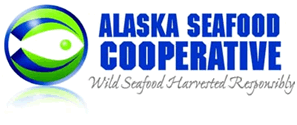Seafoodnews.com [Bristol Bay Times], July 26, 2016
By Molly Dischner
Salmon and halibut may get most of the fishing attention in Bristol Bay, but that’s not the only species caught commercially here.
In a lesser-discussed endeavor, Bristol Bay Economic Development Corporation and other fishing companies harvest yellowfin sole each year in the Bering Sea — including in part of Bristol Bay.
Yellowfin sole is a flatfish that lives near the bottom of the ocean. It’s caught all over the Bering Sea by trawlers, but each spring, some of the harvest comes from what’s called the Bristol Bay Box. That’s an area near Togiak, open just for a portion of the spring, said BBEDC’s Quota Manager Anne Vanderhoeven. “We just call it the Bristol Bay box. It is open by regulation to trawling only from … I think it’s the middle of April, until June 16,” she said, noting that actual fishing activity doesn’t start until a little later, depending on when the ice goes out. Under a voluntary agreement devised several years ago by local small boat fishermen and the mostly-¬Seattle based trawl industry, the trawl fleet leaves the area a week early — by June 7 — to try and avoid gear conflict or other issues with the local halibut and salmon fishermen.
The trawl fleet starts fishing Bristol Bay at ice-out, typically late April or early May, and then as part of that voluntary agreement the fleet leaves in early June.
There’s also one corner down in the Southeast end of the box that is used a lot by the directed halibut local fleet, so the yellowfin sole fleet stays out of that area entirely.
Once caught, much of the fish gets offloaded onto cargo ships called trampers and shipped to China for processing. Mostly, it’s hand-filleted. Eventually, much of it is shipped back to the U.S. and sold into a variety of markets — some domestically, some goes to Europe. By the time it gets back to the U.S., the light fish is sold in thin fillets, and often referred to as Pacific Sole, the Alaska-link lost in the processing effort.
Through mid-July, BBEDC had landed about 2,000 metric tons. According to a report from the National Marine Fisheries Service, the total trawl catch of yellowfin sole through July 14 was 71,300 metric tons, almost 10,000 more than had been caught through mid¬-July of 2015.
Vanderhoeven said BBEDC’s catches have been pretty steady for the past several years, ever since the larger trawl fishery was rationalized — meaning that participating companies were allocated a certain percentage of the harvest.
“Since Amendment 80 was implemented it’s been a lot more consistent — at least for us with our partners,” Vanderhoeven said. “We usually get about 75 percent to 80 percent of our total yellowfin for the year landed.”
Alaska Seafood Co-op Manager Jason Anderson said some of the fishing occurs in late January, before rock sole gets going. Then it takes a break, and picks up again in the spring, Anderson said.
“Yellowfin are out on the Bering Sea shelf, and they migrate into the shallow areas in Bristol Bay and Kuskokwim Bay where they spawn,” Anderson said. “Just like people go and fish for salmon when they’re spawning in the river, we fish for yellowfin sole spawning prior to them spawning because they’re schooled up, there’s very little halibut bycatch, low bycatch of other species. So it’s a good opportunity to get a lot of yellowfin real quickly.”
That Bristol Bay box is a particularly clean spot for spring yellowfin fishing. The catches are almost entirely yellowfin, with a little bit of cod and halibut in the trawls. In other areas, and at other times, yellowfin is mixed with other species ¬ cod, crab, a host of flatfish, and even other species that aren’t very viable commercially.
After fishing there ends, much of the effort for yellowfin winds down while the fish spawn, and have less desirable flesh. Later in the summer, it’s more often caught in conjunction with other species, like rock sole.
Just as it varies seasonally whether trawlers are targeting yellowfin, or catching it alongside other flatfish, the bycatch is also variable, depending on the time and area. Vanderhoeven said halibut bycatch is less predictable year to year where that is highest, but the co¬ops who fish yellowfin share information about what they’re seeing to try and avoid it.
Each year, the quota for yellowfin is set by the North Pacific Fishery Management Council. The quota is based on what amount of fish the National Marine Fisheries Service says can be safely harvested. But it’s always less than the scientifically justifiable amount, because there’s a 2 million metric ton combined limit on several Bering Sea fish — including yellowfin.
So when the council decides how much of that cap to catch as yellowfin, there are multiple factors at play. The companies that fish it make their requests for how the total cap is apportioned. Anderson said they consider a variety of things: how much they’ll want for the directed fishery, as well as what might be caught incidentally.
Anderson said yellowfin sole is typically the highest volume fishery, calling it the “bread and butter” fishery of flatfish. That’s partially because of the markets for it, and partially because it has less halibut bycatch than other flatfish species.
